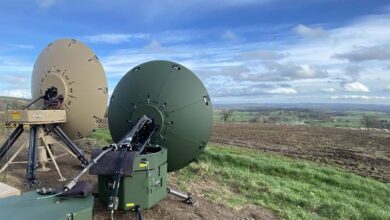New Precision Strike Missile Seeker to Turn It Into Ship Killer
The US Army flight tested a Precision Strike Missile (PrSM) multimode seeker last year that enables the missile to perform maritime targeting.
Following the test, the Land-Based Anti-Ship Missile (LBASM) seeker was transferred for integration with the PrSM, US Army Combat Capabilities Development Command Aviation & Missile Center director James Kirsch said in a statement.
“One of our biggest accomplishments this year has been the successful conclusion of our LBASM science and technology program, which will serve as the seeker for PrSM Increment 2,” Kirsch said.
“We are in the process of transferring that data to the project office and setting up future arrangements to continue providing the expertise they need, but it is a clear example of the successful transition from our S&T programs to a program of record.”
PrSM Increment 2
The PrSM Increment 2 is one of the US Army’s land-based maritime targeting weapons, including the Mid-Range Capability system and the developmental Long-Range Hypersonic Weapon system.

The army began receiving the PrSM Increment 1 in December as a replacement for the Army Tactical Missile System (ATACMS).
Like the ATACMS, the PrSM can be launched from the M142 High Mobility Artillery Rocket System and M270A2 Multiple Launch Rocket System.
The baseline version is equipped with a GPS-assisted inertial navigation system guidance package, allowing it to strike only static targets up to 310 miles (500 kilometers) away.
Multimode Seeker
The multimode seeker comprises a passive radio-frequency seeker and an imaging infrared seeker, according to Military & Aerospace Electronics.
“The missile uses Global Positioning System (GPS) satellite navigation and inertial gyro navigation to reach the vicinity of its targets,” the outlet explained.
“Once the missile reaches its target area, it listens for radio signals from enemy radar or communications to refine its targeting, and finally uses an imaging infrared sensor to pinpoint its target before impact.”
The missile’s multiple guidance will enhance its electronic warfare resistance, while the seeker’s dual components will enable better accuracy, even against moving targets, The Warzone wrote.
Moreover, the seeker’s passive radio-frequency feature will allow the missile to target enemy air defense radars and communication nodes.
It has been in development since 2015 and is expected to be operational in 2025 or 2026.











